Dark drama and historical elegance are making a striking comeback in bathroom design. Gothic-inspired interiors offer a unique alternative to minimalist trends, blending ornate detailing with moody palettes and architectural intrigue. This style resonates with those drawn to character-rich spaces that feel both mysterious and intentional. From wrought iron fixtures to cathedral-style mirrors and rich stone textures, Gothic bathrooms reflect a taste for the unconventional while staying grounded in timeless aesthetics. If you’re looking to break away from the ordinary and add theatrical charm to your space, these curated ideas will help you channel bold sophistication without sacrificing function or comfort.
Dramatic Color Palettes

Bold contrasts between midnight black, deep burgundy, and royal purple lay the foundation for the gothic aesthetic. These intense color choices aren’t simply stylistic—they serve to define the room’s emotional gravity. Dark walls paired with matte finishes evoke a moody, timeless feel, while dramatic ceiling colors add vertical interest. For balance, subtle undertones like charcoal gray and oxblood red can temper overwhelming darkness.
Strategic lighting is key to maintaining visibility while preserving the ambiance. Consider recessed lighting with dimmable features to control intensity. Rich jewel tones such as emerald green or sapphire blue can be introduced through towels, bath mats, or accent tiles to punctuate the color scheme. Paints with velvet finishes help enhance texture while reducing glare, maintaining a soft yet impactful effect. Always test sample shades under natural and artificial light to avoid overly flat results. These color choices help ground the space in gothic tradition without overwhelming it.
Ornate Fixtures
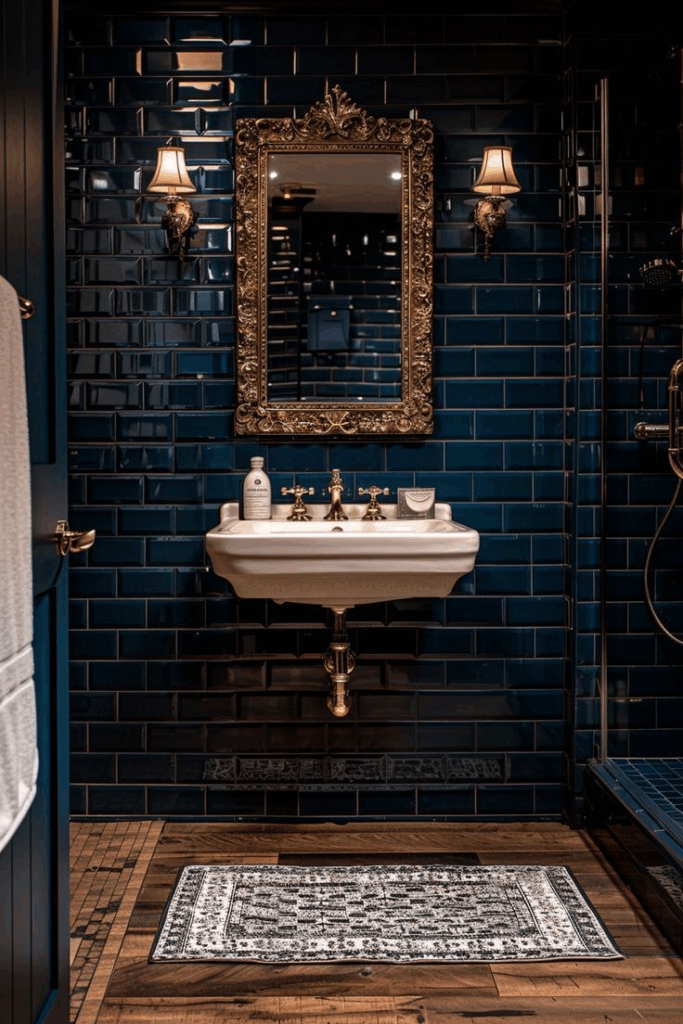
Faucets, towel bars, and cabinet handles can define the entire tone of a gothic bathroom. Select hardware with elaborate carvings or antique-style scrollwork in finishes like oil-rubbed bronze, wrought iron, or distressed brass. These accents should convey a sense of age and opulence—functional yet visually commanding.
Freestanding pedestal sinks and high-backed toilets with vintage influence bring authenticity to the design. Fixtures with exposed plumbing can also align well with gothic style, especially when paired with aged metal finishes. Crystal or metal faucet knobs add a subtle medieval elegance without overwhelming the space.
Consider ceiling-mounted rain shower heads in antique brass or brushed black for continuity. Detailed fixtures such as claw-foot faucet mounts or ornamental soap dishes reinforce the thematic continuity. Intricate wall sconces with candle-like bulbs blend modern utility with period-appropriate charm. These selections collectively form the textural and stylistic heart of the room.
Gothic Archways
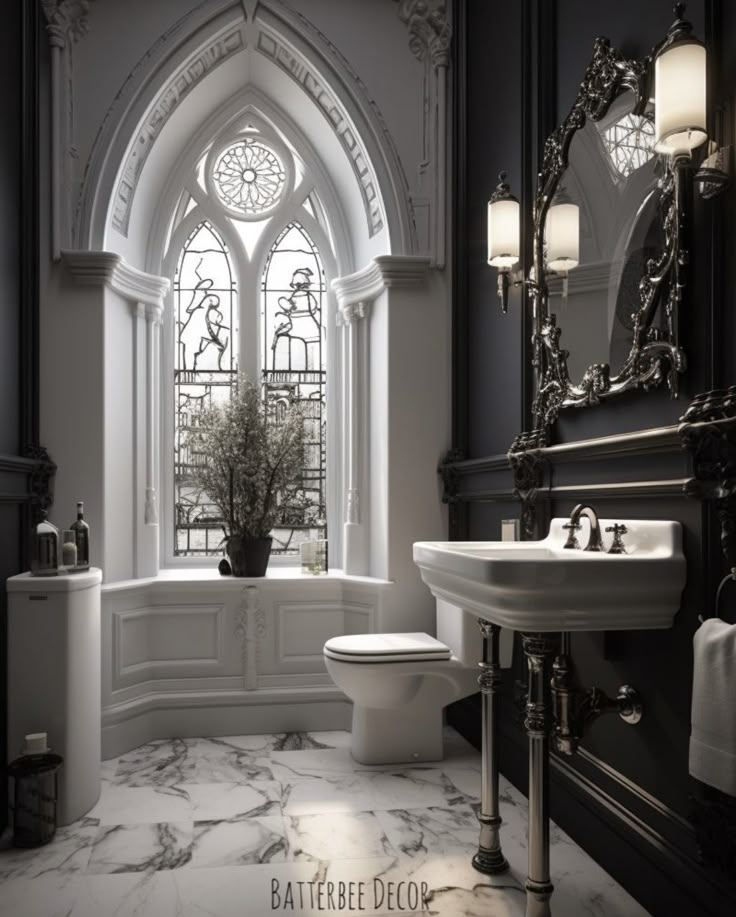
Architectural archways rooted in Gothic tradition offer a sculptural and visually stunning element to any bathroom. Think pointed arches framing doorways, shower niches, or window borders. Their unique shape adds vertical emphasis, evoking the timeless grandeur of cathedrals and medieval manors.
Arches can be custom-built using drywall or carved stone for a more permanent installation. Decorative molding along arch lines helps enhance their definition, especially when painted in a slightly contrasting dark tone. Alternatively, using black or dark wooden trim allows the arches to stand out dramatically against surrounding surfaces.
Consider mirrored arch panels behind vanities or within alcoves to give the illusion of extended space while staying true to gothic styling. Shower doors can also be fabricated with arched tops for cohesion.
It’s vital that these elements integrate with the structural bones of the room; proportion and placement are key. When executed with precision, gothic archways elevate the space from merely dark and moody to architecturally compelling.
Opulent Materials

Think marble, onyx, and carved wood—materials that have historically been tied to gothic elegance and old-world richness. Dark marble countertops and black stone vessel sinks evoke the grandeur of medieval design, particularly when paired with gilt or wrought iron trim.
Velvet, leather, and aged brass offer tactile variety, creating a visual and sensory experience. Choose surfaces with natural veining or intentional weathering for added authenticity. A matte black quartz or deep green serpentine slab becomes not just a surface but a centerpiece.
Wainscoting or full wall cladding in carved oak or walnut wood panels lends a sense of permanence and history. Avoid synthetic finishes that mimic natural materials; authenticity is crucial to achieving a truly gothic atmosphere.
Look for bespoke cabinetry with intricate carvings and stained finishes. Ensure flooring features dark stone, slate, or heavy-duty porcelain tiles with a textured surface for durability and slip resistance. These choices collectively forge a dramatic environment that feels both historic and luxurious.
Vintage Vanities
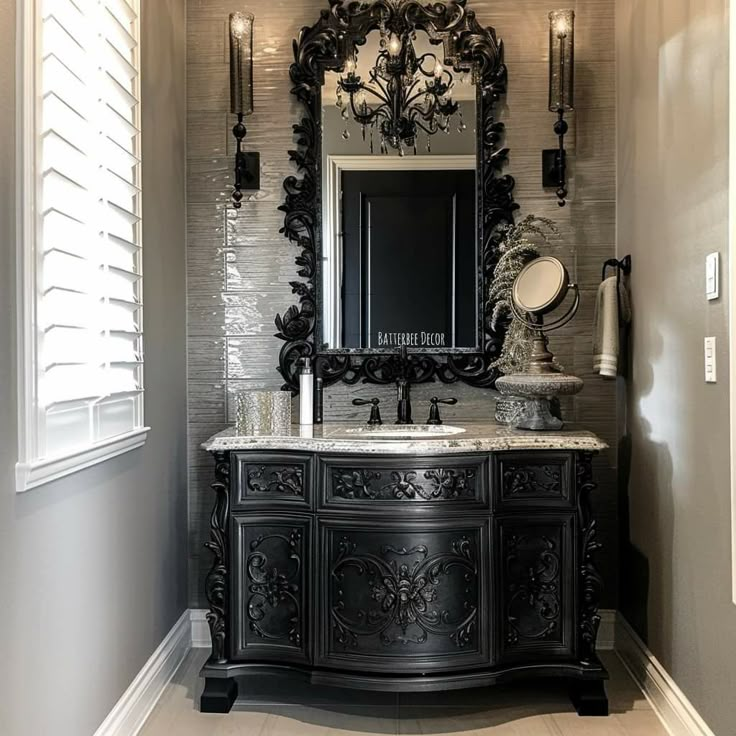
Reclaimed dressers or antique washstands make ideal candidates for gothic-inspired vanities. Their aged patinas and carved details bring undeniable depth to the space, especially when fitted with dark-toned stone countertops and brass or iron plumbing fixtures.
For cohesion, choose pieces with curved legs, distressed wood, or ornate drawer pulls. Black or deep mahogany finishes work best for grounding the look, while marble or soapstone tops introduce contrast and utility.
Antique markets, estate sales, or vintage shops are excellent sources for unique finds. Modifying these pieces for plumbing access may require professional carpentry, but the final product is highly rewarding.
Backlit mirrors or gothic candle sconces positioned around the vanity offer functional lighting without breaking the aesthetic. Consider integrating hidden storage to preserve the clean lines of an antique piece while maintaining modern usability. These vanities merge aesthetic authenticity with functionality, anchoring the entire gothic design in timeless charm.
Elaborate Mirrors
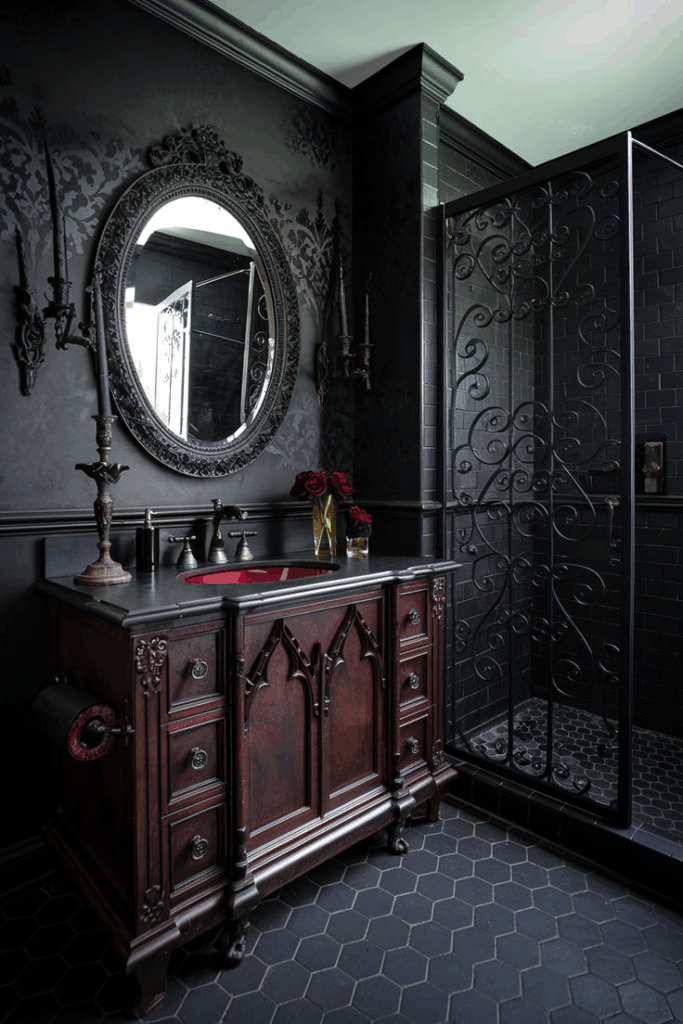
Heavy frames adorned with baroque scrollwork, fleur-de-lis, or iron filigree transform simple mirrors into statement pieces. Look for antique or reproduction frames in finishes like tarnished silver, gothic black, or aged bronze to evoke that medieval allure.
Mirrors can be oval, arched, or irregularly shaped to reflect historical influences. For greater drama, oversized mirrors above vanities add both grandeur and light reflection, especially beneficial in darker spaces. Frosted or smoked glass options lend an air of mystery without compromising usability.
For a cohesive look, mount mirrors against textured backdrops like stone or wallpapered accent walls. Hanging chains or wrought iron brackets can further emphasize the gothic aesthetic.
Backlighting with warm LED strips or vintage-style sconces on either side enhances usability while contributing to the moody ambiance. Avoid frameless or ultra-modern shapes, which can feel out of place. A mirror in a gothic bathroom should feel like a portal—dramatic, evocative, and unmistakably central to the theme.
Gothic Wallpaper
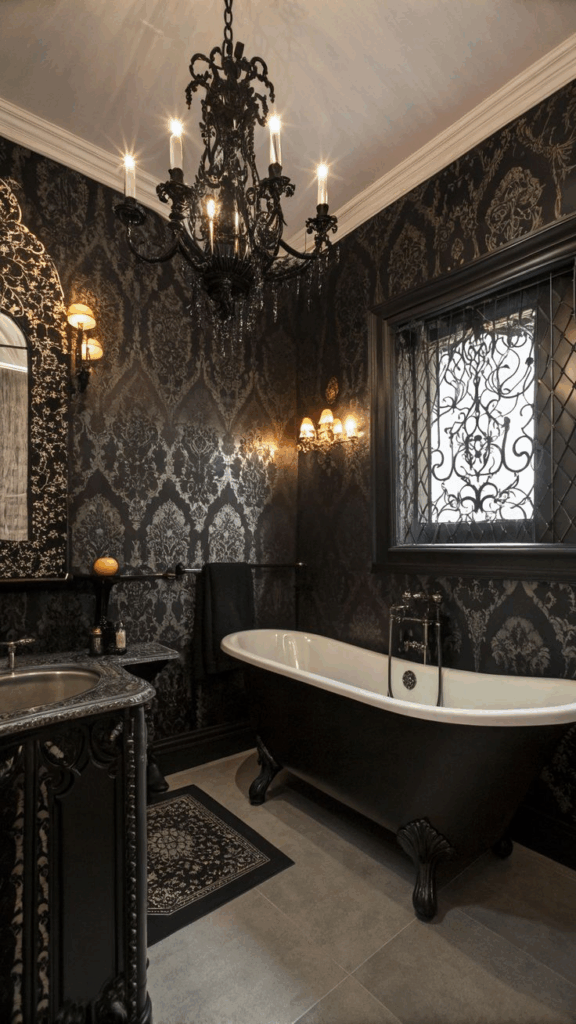
Wallpaper choices can dramatically shift a bathroom’s energy, and in a gothic space, patterns and texture are everything. Flocked damask prints, dark florals, and intricate trellis designs bring rich visual interest to walls, especially when rendered in shades like charcoal, burgundy, or obsidian.
Matte and velvet-finish papers absorb light for a soft, mysterious effect, while metallic accents introduce subtle sheen. Look for peel-and-stick varieties for easier application in bathrooms, or opt for vinyl-coated options that withstand humidity.
Feature walls behind freestanding tubs or mirrors are ideal spots to showcase bold wallpaper choices. Coordinate the pattern with surrounding elements, such as matching the design’s metallic tones with your fixtures or light fittings.
Avoid overly busy designs in small spaces; instead, go for a singular dramatic print and balance with monochromatic elements elsewhere. Gothic wallpaper should feel storied and immersive—something that commands attention without overwhelming the senses.
Gargoyle Accents
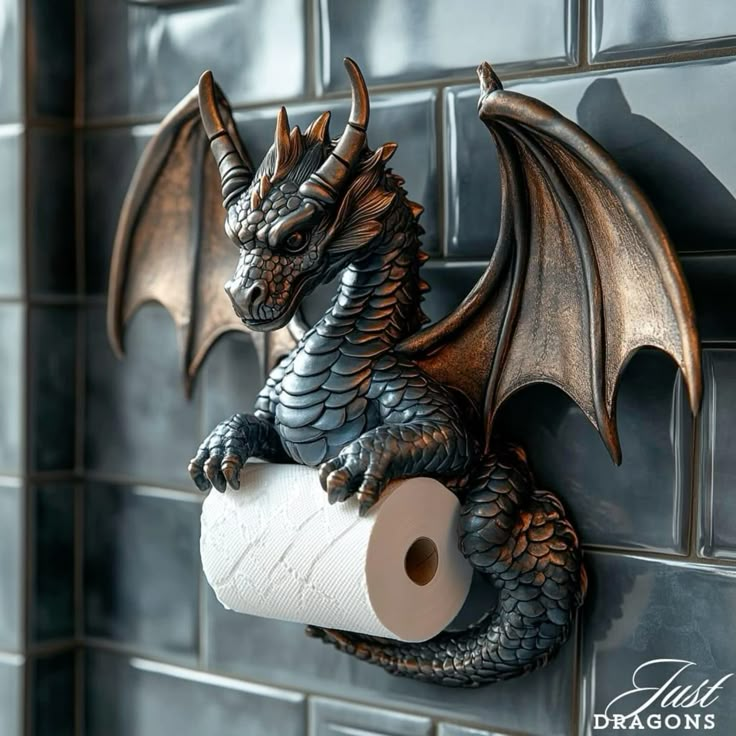
Often overlooked but quintessentially gothic, gargoyle accents infuse your bathroom with character and intrigue. These mythical creatures historically served as water spouts or spiritual protectors, and in modern design, they function as both decor and conversation starters.
Use sculptural gargoyle statues perched on ledges, or select towel hooks, soap dishes, and toothbrush holders shaped like mini beasts. Resin and concrete materials work well for authenticity and moisture resistance.
Wall-mounted gargoyles can serve as brackets for open shelving or hang above doorways to establish thematic continuity. For subtle integration, consider using gargoyle motifs in wallpaper patterns or etched into tiles.
It’s important to strike a balance between whimsy and gothic gravity—avoid overcrowding with too many figures. One or two strategically placed pieces make a lasting impression. These accents subtly hint at medieval heritage while giving your space a unique identity rooted in folklore.
Candlelit Ambiance
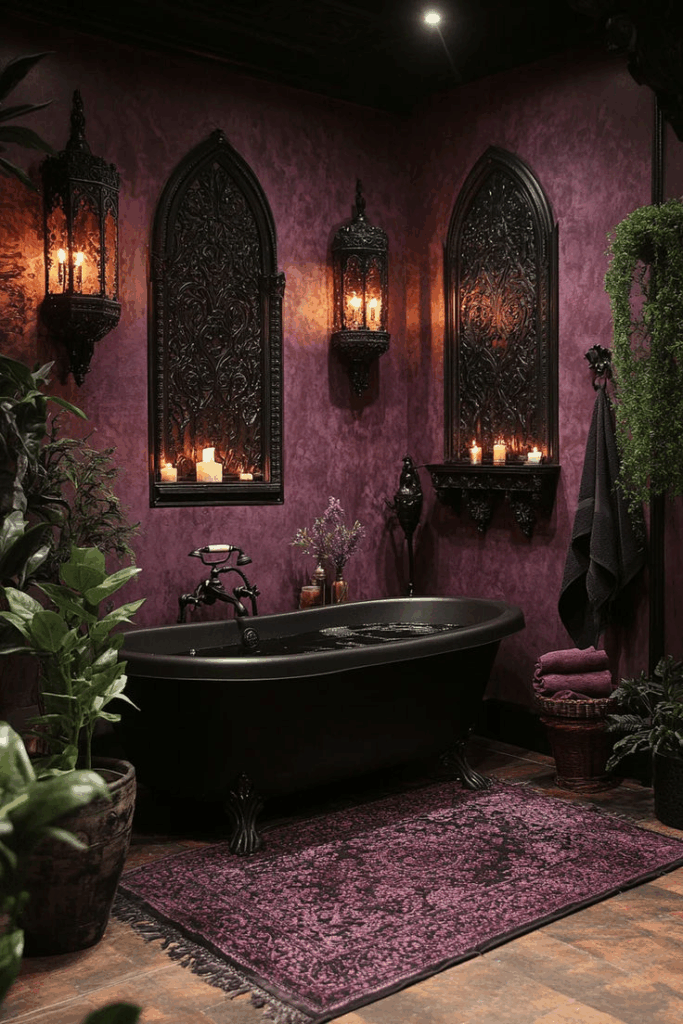
Few lighting elements capture gothic mood better than the flicker of candlelight. Incorporating candles—both real and electric—adds intimacy, drama, and authenticity to the bathroom setting. Iron or brass candelabras can be wall-mounted or used as table centerpieces near bathtubs or vanities.
Look for drip-style LED candles if open flames are impractical. Cluster candles of varying heights on a recessed shelf or alcove to create depth. Scented versions with earthy or musky notes can double as aromatherapy.
Wall sconces shaped like torch holders further enhance the theme. Always choose dimmable ambient lighting to complement the candle glow without overpowering it.
Mirrored or reflective surfaces amplify the flickering effect, casting shadows that add intrigue. Keep candles away from high-moisture zones like showers for safety. In a gothic bathroom, lighting isn’t just functional—it’s theatrical, casting every element in moody, timeless glow.
Clawfoot Bathtubs

A freestanding clawfoot tub embodies old-world elegance, making it a natural fit for gothic design. Opt for black or deep jewel-tone exteriors paired with white porcelain interiors to keep visual balance. The legs—often styled as lion’s paws or ornate scrolls—can be painted in gold, bronze, or iron finishes to match other fixtures.
Vintage-style telephone faucets and hand showers complete the picture. Place the tub near an arched window or under a chandelier for maximum impact. If space allows, elevate the tub on a slightly raised platform for added drama.
Add a velvet or brocade curtain backdrop to draw the eye toward the tub. Consider dark marble or slate flooring underneath for continuity. Decorative bath trays made of wrought iron or dark-stained wood help tie the scene together.
This style of tub is both functional and ornamental, grounding the room in historic romance while offering a luxurious bathing experience. It’s an investment piece that instantly amplifies the gothic ambiance.
Gothic Accessories
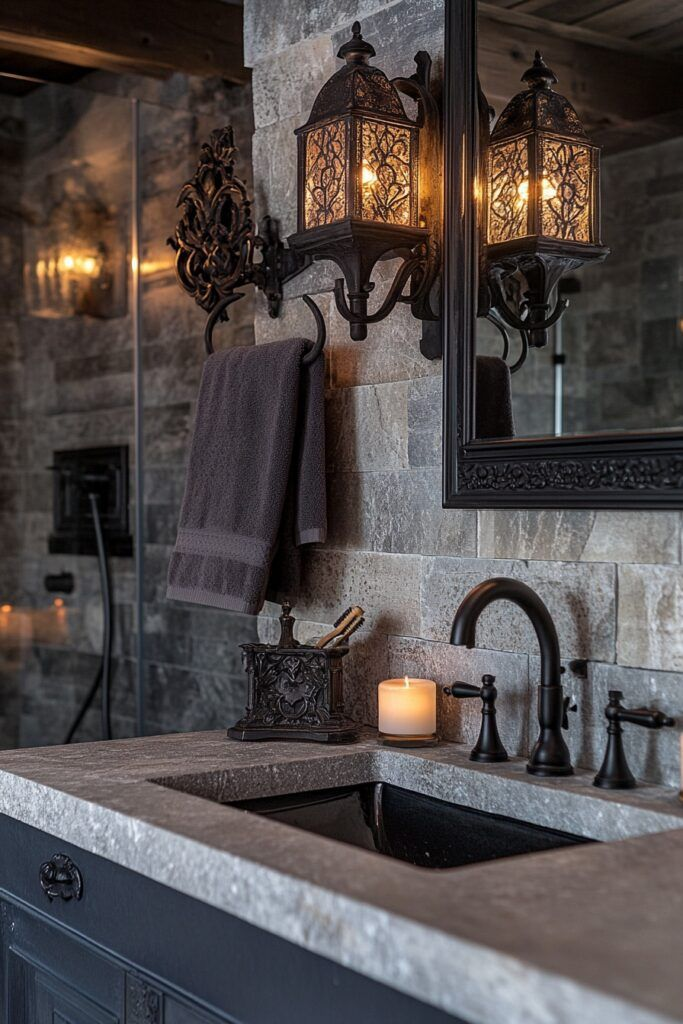
Well-chosen accessories provide the final brushstrokes that bring a gothic bathroom to life. Think apothecary jars with aged labels, antique perfume bottles, and wrought iron soap dishes arranged with intention. These pieces offer storytelling potential—each item suggesting age, ritual, or historic reference.
Use black or tarnished metal trays to hold rolled towels or bath products, and look for gothic cross motifs or filigree etching on vanity containers. Toothbrush holders, tissue box covers, and even wastebaskets can be sourced in materials like black glass, pewter, or weathered wood for continuity.
Wall art such as medieval-inspired prints, illustrated manuscripts, or anatomical sketches can echo the gothic narrative without overwhelming the space. Be selective; every object should feel curated, not cluttered.
Skull sculptures, feather quills, and hourglasses introduce symbolic depth. To avoid kitsch, favor authentic finishes over mass-produced gothic novelties. These accessories create cohesion, adding layers of mood, history, and personality that reinforce the gothic ambiance in subtle, thoughtful ways.
Stained Glass Windows
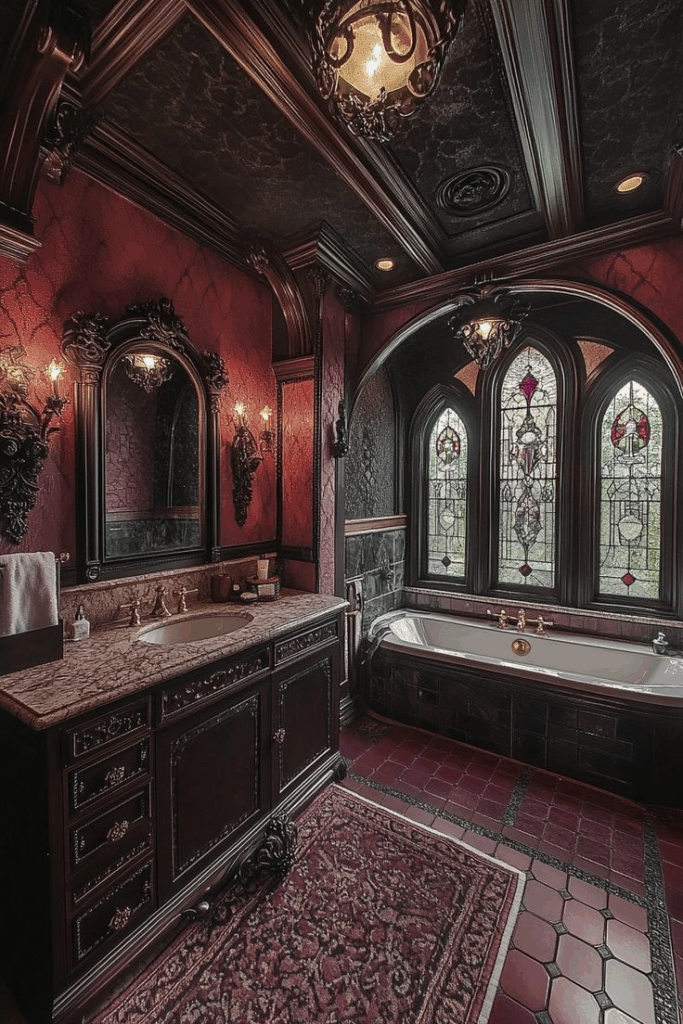
Colored glass panes framed in black metal instantly introduce a gothic architectural element into any bathroom. The way light filters through ruby, sapphire, or emerald-toned glass transforms a functional space into a shrine-like setting, full of shadowplay and color depth.
Arched or lancet-shaped windows are especially effective in maintaining historical accuracy. If installing full stained glass isn’t feasible, consider window films with gothic motifs or translucent inserts framed by decorative mullions.
Position stained glass in areas where natural light enters—over tubs, in showers, or above vanities—to maximize impact. Select designs that mirror the overall theme, such as floral quatrefoils or mythical creatures.
The interplay between darkness and stained-glass light gives the bathroom an otherworldly quality. Privacy glass solutions can be fused with stained glass to maintain function without sacrificing design.
Velvet Drapes
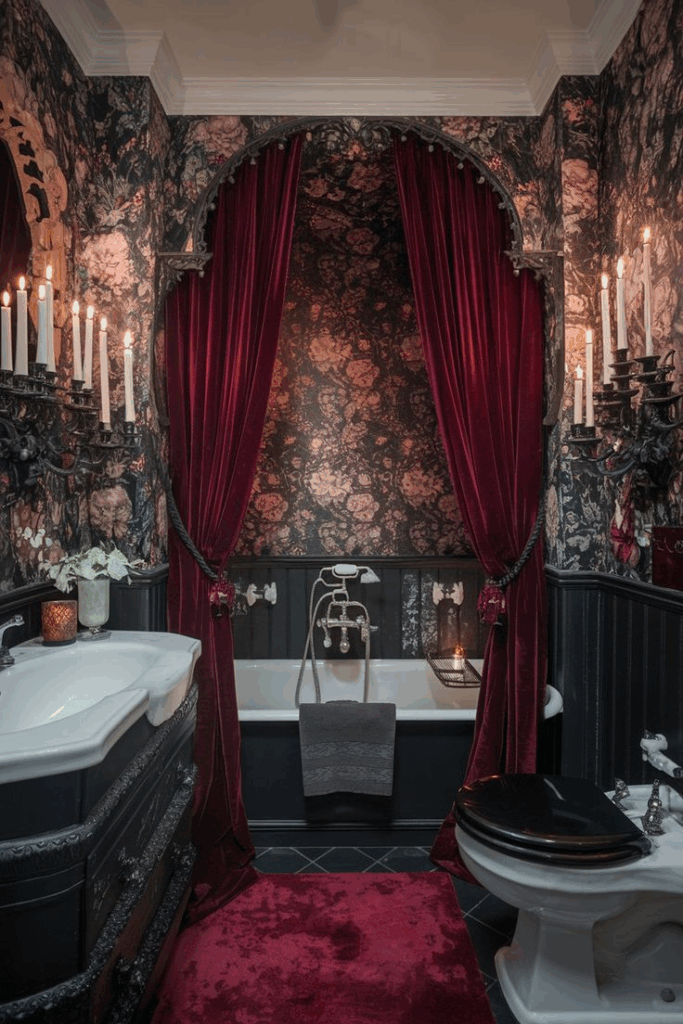
Heavy curtains made of crushed velvet offer an unmistakably gothic look while also serving a practical function in bathrooms with windows or alcove sections. Deep tones like oxblood, midnight blue, or forest green anchor the color palette and help control lighting.
Install floor-length drapes with ornate iron curtain rods and rings. Tassels or brocade trim add a regal touch. These fabrics work well layered with sheers underneath for light filtration.
Velvet also absorbs sound and adds to the cocooned, intimate feel of a gothic space. If used near water zones, ensure proper ventilation to avoid mildew. Opt for moisture-resistant backing or dry-cleanable options.
Drapes can define specific areas—framing a soaking tub, dressing vanity zones, or shielding storage areas—while heightening the atmosphere. The tactile richness of velvet reinforces the dramatic essence of gothic style.
Dark Tilework
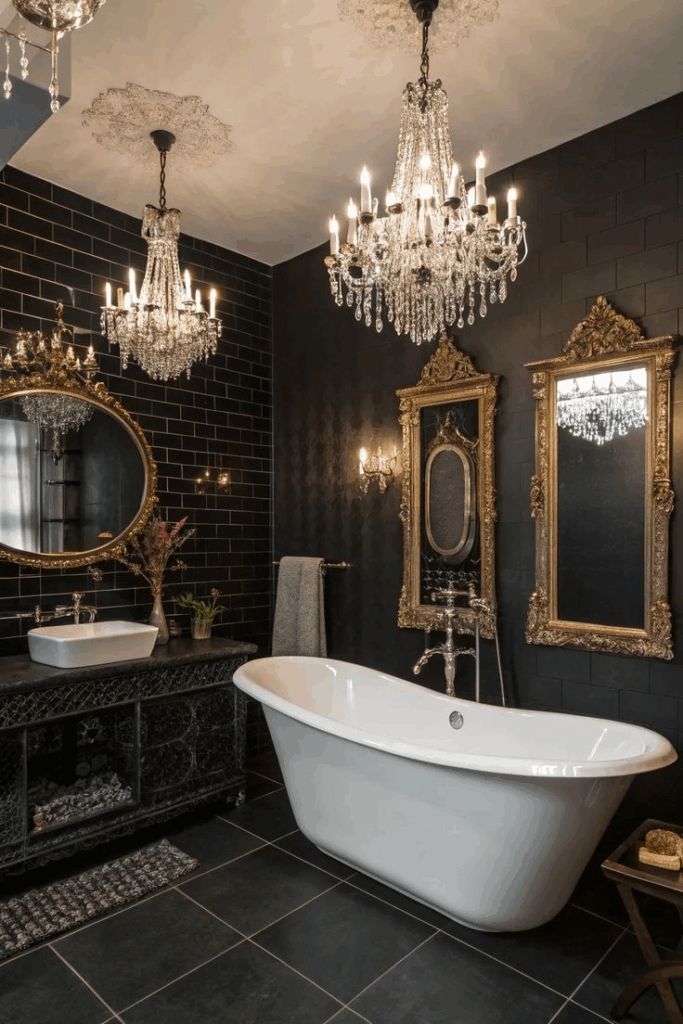
Slate, basalt, or black marble tiles offer a luxurious, historically accurate surface for gothic bathrooms. These materials work especially well for floors, shower walls, and feature backsplashes.
Look for oversized formats or intricate mosaic patterns with metallic grout lines for added visual interest. Herringbone and chevron arrangements offer a refined medieval feel, while matte finishes reduce glare and amplify mood.
Accentuate tile edges with decorative trim in brushed brass or antique pewter. Consider mixing tile types—smooth with textured, or glossy with matte—for a layered effect.
Lighting plays a critical role in showcasing dark tilework. Spotlights and recessed LEDs can highlight specific zones without flattening the texture.
Durability and water resistance make these materials practical, while their visual heft underscores the gothic theme. Proper sealing and anti-slip treatments are essential, particularly in wet areas. When chosen with care, tile becomes more than a backdrop—it’s a core expression of gothic design.
Crypt-inspired Accents
Stone urns, sculptural skull motifs, wrought iron gates, and candle alcoves introduce cryptic undertones into the gothic bathroom without veering into kitsch. These elements nod to sacred spaces and ancestral reverence.
Integrate faux stone wall panels or architectural fragments to replicate the ambiance of ancient chapels or mausoleums. Niche shelving carved into walls can hold symbolic objects—hourglasses, relic-style jars, or faux bones.
Avoid overuse by placing one or two crypt-like focal points, such as an arch-topped cabinet or a carved tombstone-style plaque. Materials should appear aged or time-worn—think distressed stone, oxidized metal, and charred wood.
Accent lighting can amplify these design details, casting shadows that deepen the atmospheric feel. When balanced with luxurious touches elsewhere, these accents make a bold statement, evoking timeless mystery and historical depth.
